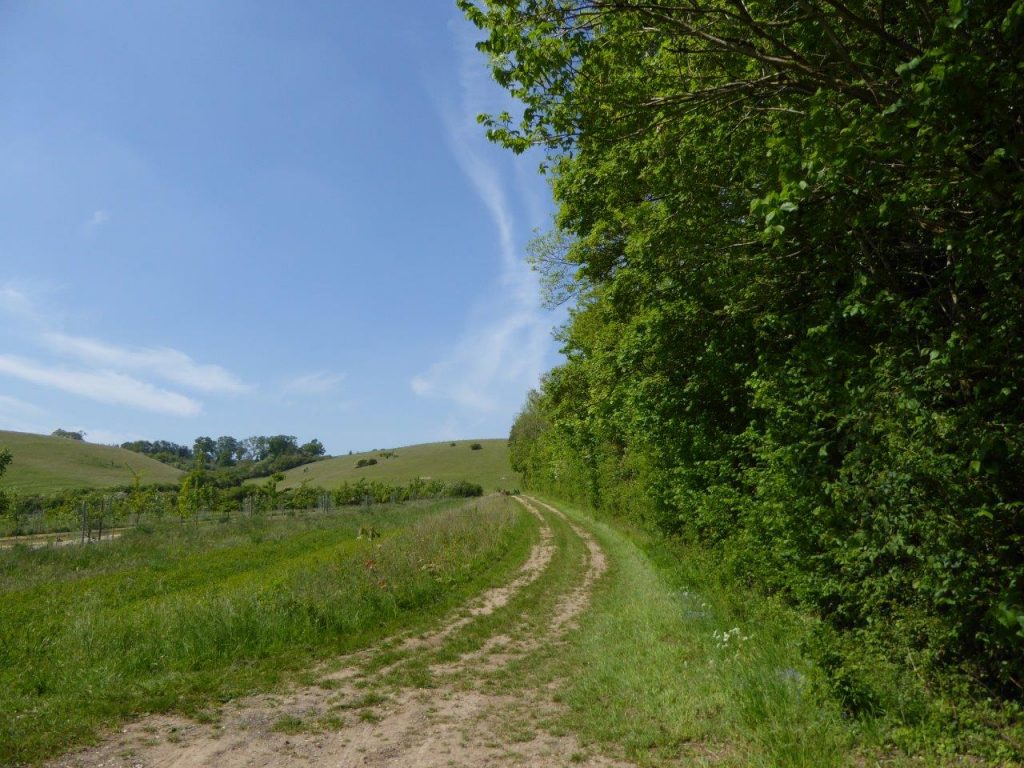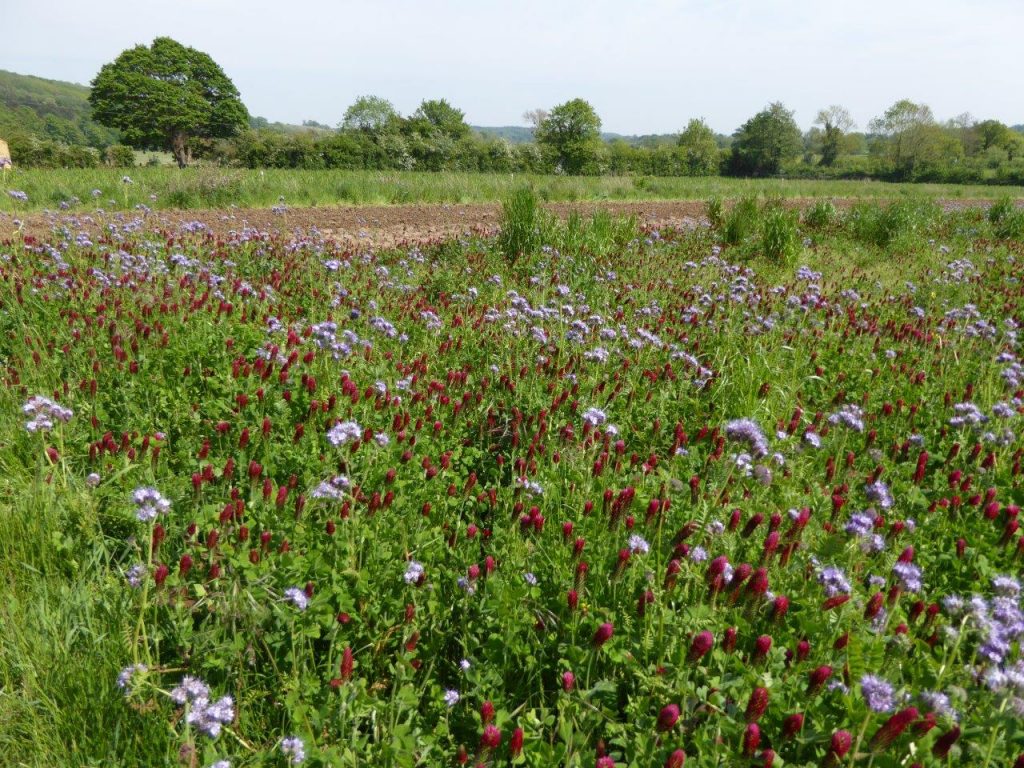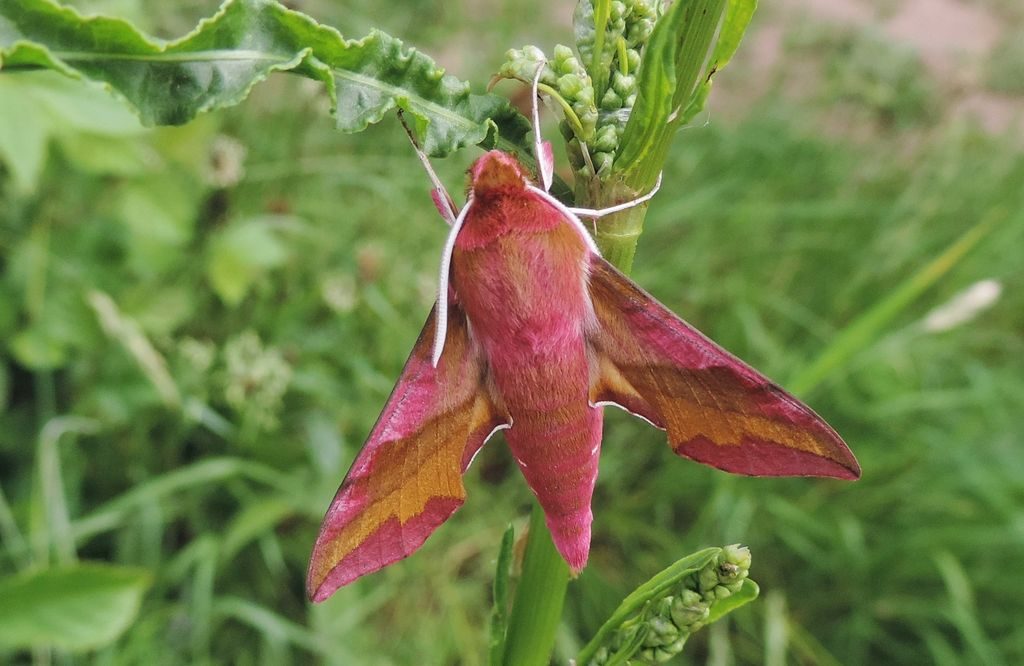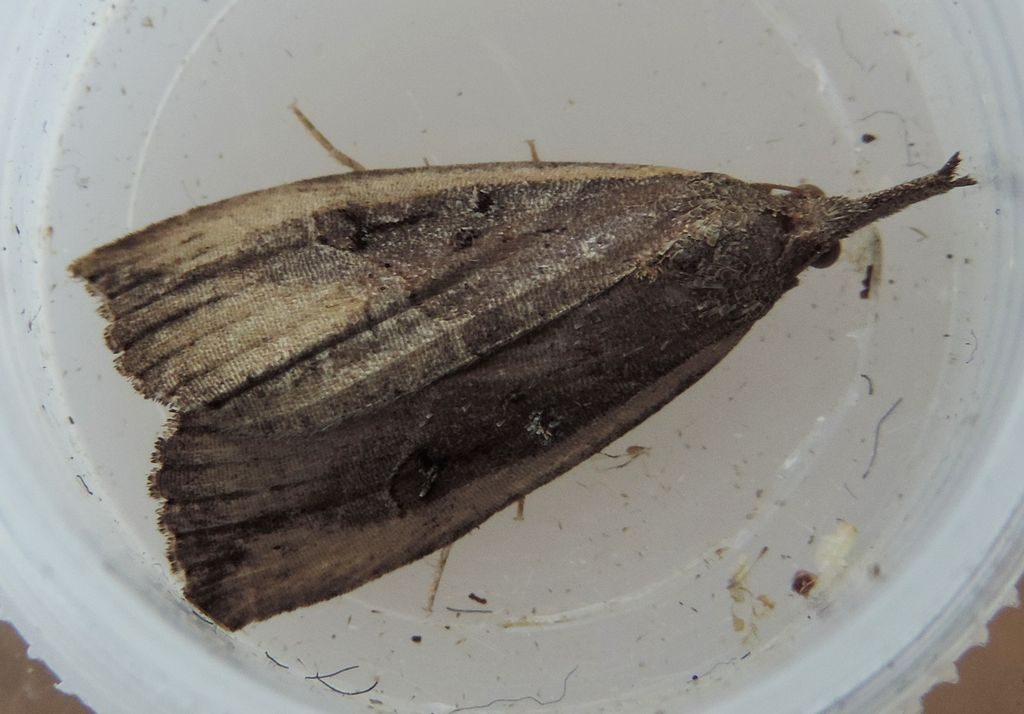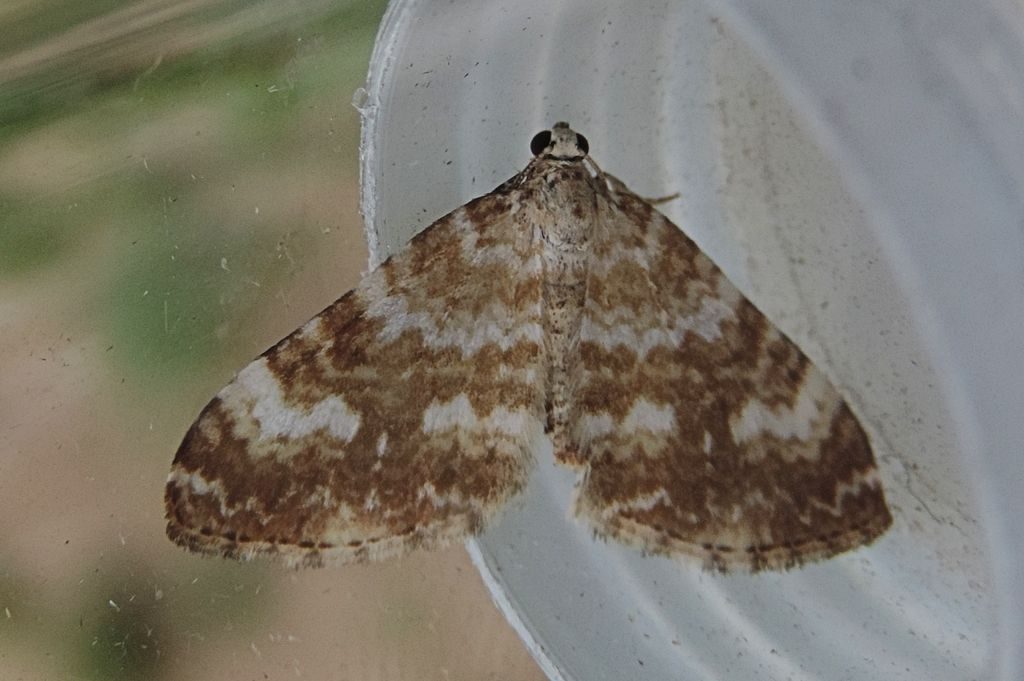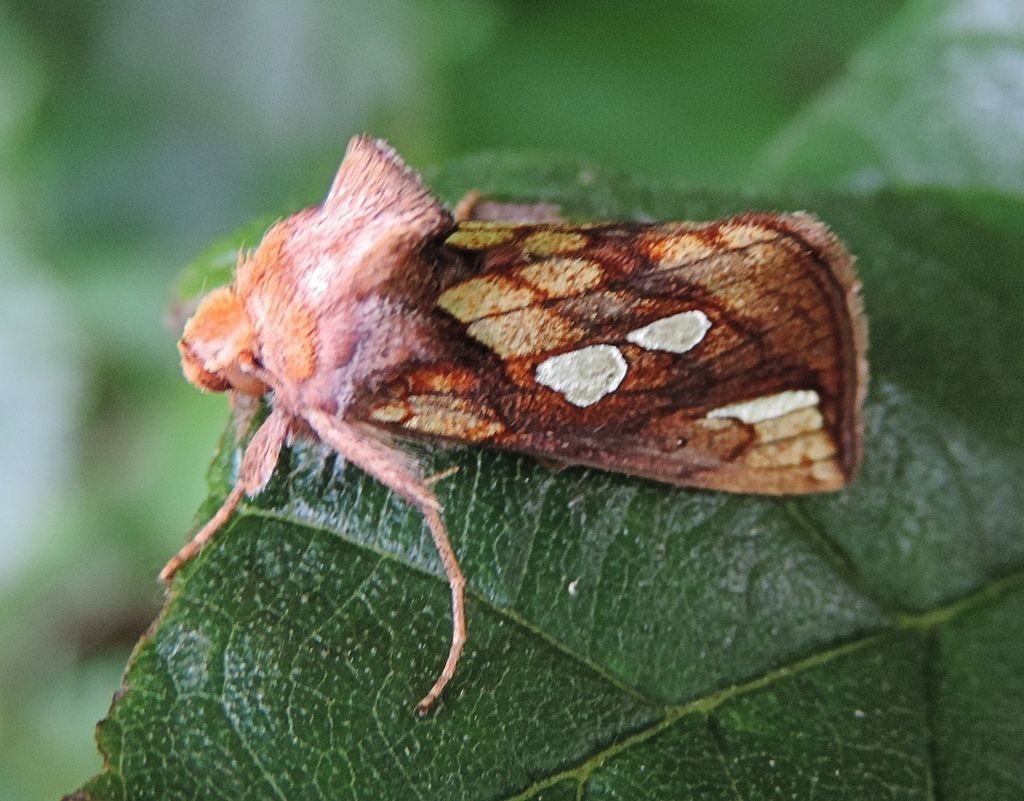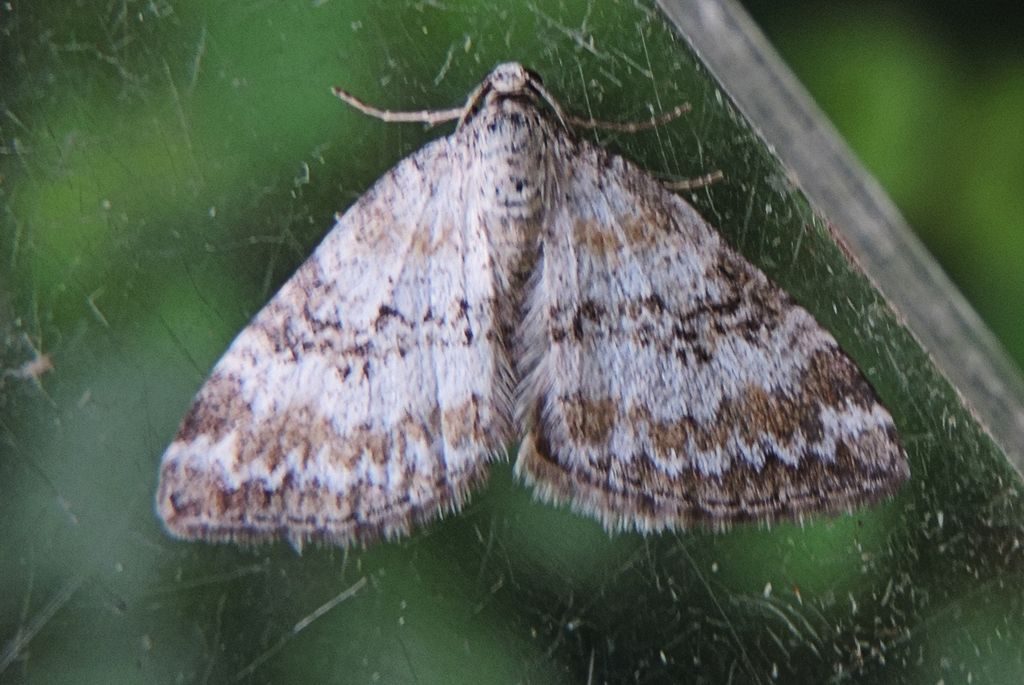This year’s moth trapping excursion took place on the night of 1st – 2nd June at the Hardwick Estate, which runs from the Chiltern chalk escarpment down to the north bank of the Thames east of Whitchurch-on-Thames and west of Mapledurham. The venue had been suggested by Sandra Parkinson, who lives at nearby Chalkhills (Boze Down), where we have held previous RDNHS moth trapping evenings. The Hardwick Estate is owned by Sir Julian Rose, a strong advocate of organic farming, who has two organic farmers as tenants. We were the guests of one of them, Iain Tolhurst, who has three fields on which he grows organic vegetables for sale on site, see http://www.tolhurstorganic.co.uk/. Two of the fields, known locally as Lower Bec and Upper Knight, lie north and south of the Hardwick Road at the west gates of the estate, which is where Paul Black, Roy Dobson, Ian Esland and myself (Norman Hall) ran our MV mothing lights, either as bare lamps over white sheets or as moth traps. Iain’s other field is a walled garden further east, near Hardwick House.
The other tenant farmer on the estate, James Norman, had given us permission, for which we were very grateful, to go into parts of his land adjacent to Iain’s. I was able to run one light trap on a field of his, known locally as Bec Tythe which is chalk downland (though the flora improved considerably higher up than my cable could reach) in addition to my two lights in Iain’s field. Jan & Laurie Haseler put lights in a species rich meadow of James’s known as ‘The Park’, entering at the walled garden.
It was a surprisingly successful night, and very interesting because we had never trapped anywhere remotely similar. In Iain’s two fields at the west gates we recorded 114 species of the larger moths (macrolepidoptera), together with 13 pyralid moths and 18 micros. Only 2 additional macrolepidoptera, Mouse Moth & Fern, were seen in James’s fields, together with 3 more pyralid moths, a plume moth and 4 more micros, bringng the grand total to 155 species. I consider the number of macrolepidoptera species recorded on a single night to be a good indication of the overall biodiversity of a site and anywhere where more than 100 can be found on a single night (especially early in June before numbers peak) is very good indeed. [The number of microlepidoptera recorded is less useful because micros are much more difficult to identify, and totals depend much more on the skills and experience of the observers than the numbers actually present.] The high number of macrolepidoptera recorded may have been exceptional because of the weather conditions, which were ideal. The temperature had risen to 25°C (in Reading) in the day on June 1st, was still 17°C at midnight, and then had only come down to 13°C by 06.00 next morning. Conditions the night before and the night after were much less favourable, so we were very lucky.
At least one example of each of the macrolepidoptera species was kept for the benefit of the 8 RDNHS members who came to see and photograph the catch on the Sunday morning. We were also able to show Iain Tolhurst a few of the moths after he had finished some early morning ploughing. Altogether a very successful event. Records of particular interest to me included:
Buttoned Snout (2), which feed on hop, and I see very infrequently.
Netted Pug (3), which I had never seen in Berkshire or Oxfordshire. The larvae feed on Campions (Silene spp.) which are numerous in the ‘beetle banks’ (see below).
Pauper Pug (1), new to me, pointed out and verified by Martin Townsend, who visited us around midnight.
Sandy Carpet (3), where there was a dark example. I had previously only seen pale forms.
Obscure Wainscot (1), a reedbed speciality, always nice to see.
…and a possible Phtheochroa schreibersiana, which will need dissecting to confirm. This is a Cochylid moth (Torticidae).
High numbers of the following were also of interest:
Grass Rivulet, 139. Normally quite scarce. Jan Haseler thought there could have been thousands in ‘The Park’, judging by the numbers she saw and the considerable area of the field
Small Elephant Hawk Moth, 52 were seen in all, compared with just 1 [Large] Elephant Hawk Moth
Reddish Light Arches, 19 on Lower Bec north side. A local concentration. Others elsewhere but nowhere near as many.
Shears, 26 in Bec Tythe. Only 6 others elsewhere.
Beetle banks, green manure and hedgerows. Notes on the habitat
Apart from the vegetables in Iain’s fields, there are strips of mixtures of Phacelia tenacetifolia (Boraginaceae) and Crimson Clover Trifolium incarnatum which are used as a ‘green manure’ to plough back into the soil. There are also ‘beetle banks’, which are not actually banks but strips planted with mixtures of tussock grasses and flowering plants such as Silene spp., Centaurea (Cornflowers) and Aster (Daisies) that encourage beneficial insects and spiders, thus helping to reduce pest numbers. The number of moths caught or seen nectaring near these ‘beetle banks’ was impressive.
Both of Iain’s fields at the estate gates are surrounded by hedges which are either natural species-rich ancient hedges or hedges that that have been augmented by imaginative plantings of native trees such as oak, sallow, maple and alder. Many of the surrounding hedges have been (deliberately) left to grow much higher than is usual. Fields the other side of all these hedges are of species-rich grassland or downland that have been grazed by cows, but not over-grazed. The east side of the northern field (Lower Bec) is bordered by a high hedge, then a lane (Path Hill), then woodland. In the NE corner, the hedge is lower and there is a gate into James Norman’s field (Bec Tythe) to the north. Near the gate is a flattish area grazed by cows, where the only interesting plant to be seen was Cynoglossum (Hound’s Tongue), but further north the ground rises steeply, becoming too steep for the cows, and here the downland flora is much richer. There is also a tongue of partly ancient woodland on the east side along Path Hill. The upper slopes at least certainly warrant further study.
Iain’s Walled Garden was, of course, bordered more by walls than by hedges, which is why we thought it best concentrate our attention on his other two fields, so for the time being the potential of the walled garden is untested. The biodiversity of the whole estate warrants further study through moth trapping, if we are encouraged to do so – and can find the time.
Report by Norman Hall
Lower Bec, Tolhurst Organic Farm Phacelia tenacetifolia and Crimson Clover Trifolium incarnatum Small Elephant Hawk-moth Buttoned Snout Sandy Carpet Gold Spot Grass Rivulet
Pictures by Rob Stallard and Norman Hall
| Taxon | English Name | National Status | Number |
| Korscheltellus lupulina | Common Swift | Common | 108 |
| Nemophora degeerella | Common | 1 | |
| Nematopogon schwarziellus | Common | 1 | |
| Tinea trinotella | Common | 1 | |
| Monopis obviella | Common | 1 | |
| Glyphipterix thrasonella | Common | 1 | |
| Hofmannophila pseudospretella | Brown House-moth | Common | 2 |
| Adaina microdactyla | Hemp-agrimony Plume | Common | 1 |
| Archips podana | Large Fruit-tree Tortrix | Common | 1 |
| Pandemis cinnamomeana | Common | 3 | |
| Pandemis cerasana | Barred Fruit-tree Tortrix | Common | 1 |
| Syndemis musculana | Common | 1 | |
| Cnephasia stephensiana | Common | 1 | |
| Pseudargyrotoza conwagana | Common | 25 | |
| Phtheochroa schreibersiana | pRDB1 | 1 | |
| Agapeta hamana | Common | 1 | |
| Aethes smeathmanniana | Common | 4 | |
| Cochylis atricapitana | Common | 1 | |
| Hedya pruniana | Plum Tortrix | Common | 10 |
| Celypha lacunana | Common | 5 | |
| Notocelia cynosbatella | Common | 4 | |
| Notocelia uddmanniana | Bramble Shoot Moth | Common | 1 |
| Notocelia trimaculana | Common | 3 | |
| Lathronympha strigana | Common | 1 | |
| Aphomia sociella | Bee Moth | Common | 1 |
| Nephopterix angustella | Local | 1 | |
| Assara terebrella | Notable A | 1 | |
| Homoeosoma sinuella | Common | 2 | |
| Ephestia unicolorella | Local | 1 | |
| Anania fuscalis | Local | 5 | |
| Anania hortulata | Small Magpie | Common | 6 |
| Udea olivalis | Common | 6 | |
| Pleuroptya ruralis | Mother of Pearl | Common | 1 |
| Evergestis forficalis | Garden Pebble | Common | 2 |
| Scoparia pyralella | Common | 9 | |
| Eudonia lacustrata | Common | 2 | |
| Eudonia pallida | Local | 6 | |
| Crambus lathoniellus | Common | 14 | |
| Acentria ephemerella | Water Veneer | Common | 15 |
| Parapoynx stratiotata | Ringed China-mark | Common | 1 |
| Watsonalla binaria | Oak Hook-tip | Common | 6 |
| Cilix glaucata | Chinese Character | Common | 2 |
| Thyatira batis | Peach Blossom | Common | 1 |
| Tethea ocularis | Figure of Eighty | Common | 8 |
| Smerinthus ocellata | Eyed Hawk-moth | Common | 1 |
| Laothoe populi | Poplar Hawk-moth | Common | 4 |
| Sphinx ligustri | Privet Hawk-moth | Common | 4 |
| Deilephila elpenor | Elephant Hawk-moth | Common | 1 |
| Deilephila porcellus | Small Elephant Hawk-moth | Local | 61 |
| Idaea seriata | Small Dusty Wave | Common | 2 |
| Idaea trigeminata | Treble Brown Spot | Local | 7 |
| Idaea aversata | Riband Wave | Common | 1 |
| Timandra comae | Blood-vein | Common | 2 |
| Cyclophora annularia | Mocha | Notable B | 1 |
| Cyclophora punctaria | Maiden’s Blush | Local | 2 |
| Cyclophora linearia | Clay Triple-lines | Local | 3 |
| Xanthorhoe fluctuata | Garden Carpet | Common | 2 |
| Xanthorhoe spadicearia | Red Twin-spot Carpet | Common | 2 |
| Xanthorhoe designata | Flame Carpet | Common | 1 |
| Xanthorhoe montanata | Silver-ground Carpet | Common | 5 |
| Camptogramma bilineata | Yellow Shell | Common | 2 |
| Epirrhoe alternata | Common Carpet | Common | 2 |
| Hydriomena impluviata | May Highflier | Common | 1 |
| Electrophaes corylata | Broken-barred Carpet | Common | 10 |
| Cosmorhoe ocellata | Purple Bar | Common | 3 |
| Eustroma reticulata | Netted Carpet | RDB | 1 |
| Dysstroma truncata | Common Marbled Carpet | Common | 9 |
| Colostygia pectinataria | Green Carpet | Common | 15 |
| Horisme vitalbata | Small Waved Umber | Common | 3 |
| Horisme tersata | Fern | Common | 1 |
| Melanthia procellata | Pretty Chalk Carpet | Common | 5 |
| Perizoma albulata | Grass Rivulet | Local | 139 |
| Perizoma flavofasciata | Sandy Carpet | Common | 3 |
| Pasiphila rectangulata | Green Pug | Common | 3 |
| Eupithecia pulchellata | Foxglove Pug | Common | 1 |
| Eupithecia venosata | Netted Pug | Local | 3 |
| Eupithecia tantillaria | Dwarf Pug | Common | 1 |
| Eupithecia egenaria | Pauper Pug | RDB | 1 |
| Eupithecia centaureata | Lime-speck Pug | Common | 1 |
| Eupithecia assimilata | Currant Pug | Common | 1 |
| Eupithecia vulgata | Common Pug | Common | 1 |
| Eupithecia exiguata | Mottled Pug | Common | 10 |
| Eupithecia subumbrata | Shaded Pug | Local | 3 |
| Eupithecia subfuscata | Grey Pug | Common | 2 |
| Pterapherapteryx sexalata | Small Seraphim | Local | 4 |
| Lomaspilis marginata | Clouded Border | Common | 2 |
| Ligdia adustata | Scorched Carpet | Local | 7 |
| Macaria alternata | Sharp-angled Peacock | Local | 1 |
| Macaria liturata | Tawny-barred Angle | Common | 2 |
| Petrophora chlorosata | Brown Silver-line | Common | 5 |
| Plagodis dolabraria | Scorched Wing | Local | 6 |
| Opisthograptis luteolata | Brimstone Moth | Common | 16 |
| Odontopera bidentata | Scalloped Hazel | Common | 1 |
| Biston betularia | Peppered Moth | Common | 3 |
| Menophra abruptaria | Waved Umber | Common | 2 |
| Peribatodes rhomboidaria | Willow Beauty | Common | 10 |
| Alcis repandata | Mottled Beauty | Common | 1 |
| Cabera pusaria | Common White Wave | Common | 2 |
| Lomographa bimaculata | White-pinion Spotted | Common | 2 |
| Lomographa temerata | Clouded Silver | Common | 22 |
| Campaea margaritaria | Light Emerald | Common | 29 |
| Drymonia dodonaea | Marbled Brown | Common | 2 |
| Notodonta ziczac | Pebble Prominent | Common | 1 |
| Pterostoma palpina | Pale Prominent | Common | 6 |
| Ptilodon capucina | Coxcomb Prominent | Common | 1 |
| Phalera bucephala | Buff-tip | Common | 7 |
| Rivula sericealis | Straw Dot | Common | 29 |
| Hypena proboscidalis | Snout | Common | 7 |
| Hypena rostralis | Buttoned Snout | Notable B | 3 |
| Calliteara pudibunda | Pale Tussock | Common | 18 |
| Spilosoma lutea | Buff Ermine | Common | 8 |
| Spilosoma lubricipeda | White Ermine | Common | 36 |
| Callimorpha dominula | Scarlet Tiger | Local | 2 |
| Tyria jacobaeae | Cinnabar | Common | 6 |
| Eilema sororcula | Orange Footman | Local | 6 |
| Euclidia mi | Mother Shipton | Common | 1 |
| Abrostola tripartita | Spectacle | Common | 1 |
| Diachrysia chrysitis | Burnished Brass | Common | 6 |
| Autographa gamma | Silver Y | Immigrant | 2 |
| Autographa pulchrina | Beautiful Golden Y | Common | 1 |
| Plusia festucae | Gold Spot | Common | 2 |
| Colocasia coryli | Nut-tree Tussock | Common | 1 |
| Acronicta alni | Alder Moth | Local | 1 |
| Acronicta rumicis | Knot Grass | Common | 2 |
| Craniophora ligustri | Coronet | Local | 3 |
| Cucullia umbratica | Shark | Common | 1 |
| Amphipyra tragopoginis | Mouse Moth | Common | 1 |
| Caradrina morpheus | Mottled Rustic | Common | 1 |
| Hoplodrina ambigua | Vine’s Rustic | Common | 6 |
| Charanyca trigrammica | Treble Lines | Common | 311 |
| Rusina ferruginea | Brown Rustic | Common | 1 |
| Apamea remissa | Dusky Brocade | Common | 1 |
| Apamea epomidion | Clouded Brindle | Common | 1 |
| Apamea anceps | Large Nutmeg | Local | 1 |
| Apamea sordens | Rustic Shoulder-knot | Common | 17 |
| Apamea monoglypha | Dark Arches | Common | 38 |
| Apamea sublustris | Reddish Light Arches | Local | 37 |
| Oligia strigilis agg. | Marbled Minor agg | 84 | |
| Oligia fasciuncula | Middle-barred Minor | Common | 93 |
| Lacanobia w-latinum | Light Brocade | Local | 16 |
| Lacanobia oleracea | Bright-line Brown-eye | Common | 2 |
| Hada plebeja | Shears | Common | 34 |
| Mythimna pallens | Common Wainscot | Common | 47 |
| Mythimna albipuncta | White-point | Immigrant, recent colonist | 24 |
| Leucania comma | Shoulder-striped Wainscot | Common | 15 |
| Leucania obsoleta | Obscure Wainscot | Local | 1 |
| Agrotis exclamationis | Heart & Dart | Common | 115 |
| Agrotis segetum | Turnip Moth | Common | 10 |
| Agrotis puta | Shuttle-shaped Dart | Common | 7 |
| Ochropleura plecta | Flame Shoulder | Common | 23 |
| Diarsia mendica | Ingrailed Clay | Common | 11 |
| Noctua pronuba | Large Yellow Underwing | Common | 3 |
| Xestia c-nigrum | Setaceous Hebrew Character | Common | 36 |
| Nola confusalis | Least Black Arches | Local | 3 |
| Pseudoips prasinana | Green Silver-lines | Common | 1 |

